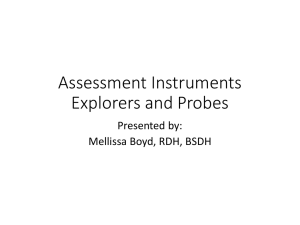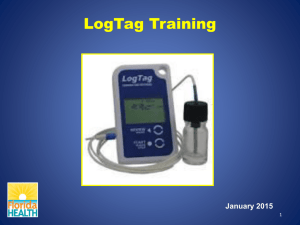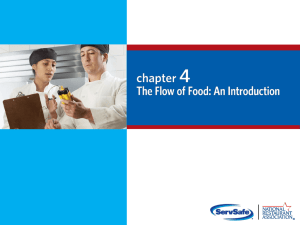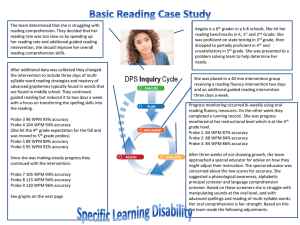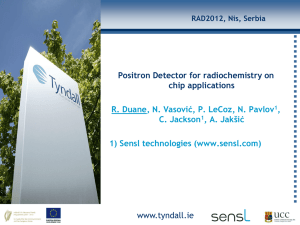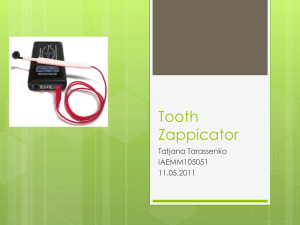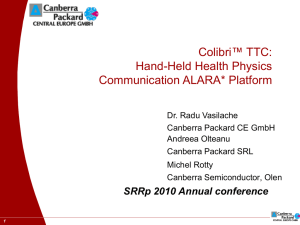PowerPoint Handout: Probe Technique Focus
advertisement
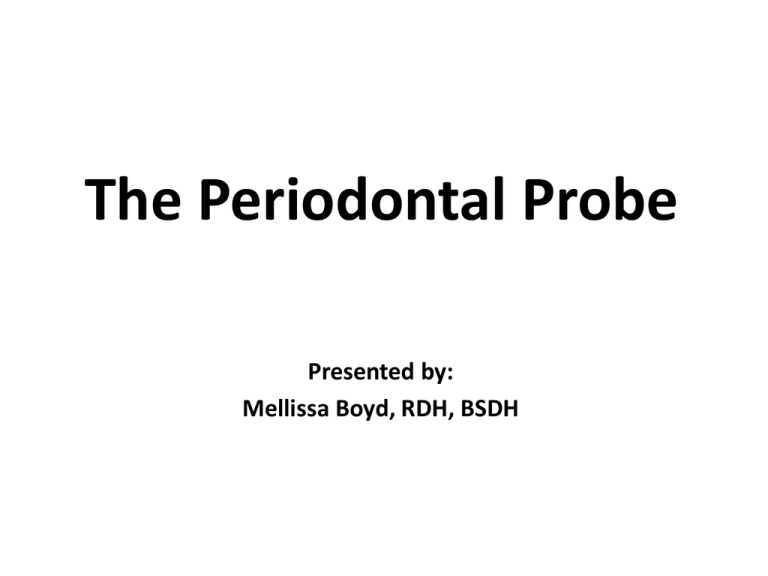
The Periodontal Probe Presented by: Mellissa Boyd, RDH, BSDH Calibrated Probe • Assessment instrument • Determine health of periodontal tissues Working-End • • • • • Blunt Rod-shaped Millimeter markings Color coded Cross-section – Round – Rectangular Purpose A B C • Measurement – Sulcus/pocket depths – Width of attached gingiva – Bleeding – Exudate – Oral lesions – Furcations E D Sulcus vs. Pocket • Sulcus – Space between free gingiva and tooth – 1-3mm • Pocket – Sulcus deepened because of disease – 4mm+ – Gingival vs. periodontal Probing Depth • Entire sulcus probed • Six sites per tooth – 3 buccal – 3 lingual • Record deepest reading per site • Depth rounded up to nearest mm Basic Technique • Insert tip to JE, feel slight resistance • Gentle walking strokes – 10 – 20 grams pressure – Digital motion – Close together • 1-2 mm • Not out of sulcus Probe Position ‐ Healthy Tissue Sulcus • Space between free gingiva and tooth • Healthy sulcus = 1 to 3 mm • Probe tip touches tooth near the CEJ Probe Position – Diseased Tissue Pocket • Sulcus deepened because of disease • 4mm+ • Bleeding • Probe tip touches root at point apical of CEJ Comparison Measurement Marquis Probe (3‐6‐9‐12) Healthy Sulcus Probing Depth? Diseased Pocket Probing Depth? Need CPE to get the full story Measurements Recorded • 6 sites per tooth • Record deepest reading Insertion of Probe Tip • Keep side of tip against tooth surface – Tip = 1-2mm of probe • Observe enamel contour near CEJ • Tip parallel to tooth surface, keep constant contact with tooth surface Incorrect Insertion • Probe tip should NOT be held away from tooth • Inaccurate measurement • PAIN Adaptation Parallel to long axis of tooth Inaccurate measurement Probe Walking Stroke • Gently insert to base of sulcus • Walking Stroke – Series of light bobbing strokes – Made within sulcus/pocket while keeping side of probe tip against tooth surface Maxillary Posterior Technique – Extraoral fulcrum – Begin at DB line angle of maxillary right most posterior tooth (1, 2, etc) • Insert & walk probe into distal “area” • Record deepest measurement from DB line angle to D of tooth Walk all the way to the direct Distal Maxillary Posterior Technique • Remove and reinsert probe @ DB line angle • Walk probe across B surface • Walk probe around MB line angle and touch M contact • Slant probe under contact (col) • Take measurement under M contact in col area Maxillary Anterior Technique • NOTE: – When you reach midline, walking sequence will reverse for max L quadrant …starting @ #9 you will walk probe from MF line angle into M – Touch contact and slant probe very slightly to access col reading (anterior teeth are thinner so don’t over tilt) – Remove & reinsert at MF line angle, probe across M around DF line angle (continue sequence for max L quad) – Probe Lingual surfaces from #15, 16, etc. back across arch Max vs. Mand – who wins? Mandibular Technique • Posterior – Begin at DB line angle of mandibular right most posterior tooth (32, 31, etc) • Anterior – At midline walking sequence will reverse for mand L quadrant starting @ #24 you will walk probe from MF line angle into M – Touch contact and slant probe very slightly to access col reading (anterior teeth are thinner so don’t over tilt) – Remove & reinsert at MF line angle, probe across M around DF line angle (continue sequence for mand L quad) – Probe Lingual surfaces from #17, 18, etc. back across arch Furcation Involvement • Bone loss in area of furcation • Result of periodontal disease • Furcation probe or periodontal probe • Access – Mandibular molars – Maxillary molars – Maxillary 1st premolar Oral Lesions or Deviations • Document with measurement • Use anatomical references – anterior-posterior (front to back) – superior-inferior (top to bottom) Mucogingival Examination • Attached Gingiva – Area from base of sulcus to mucogingival junction (MGJ) – Attached to the cementum of tooth and alveolar bone by collagenous fibers Mucogingival Examination • Alveolar mucosa – located apical to the MGJ – deeper red color than attached – Shiny and loosely attached to underlying bone • MG defect – Recession near MGJ or into alveolar mucosa Clinical Attachment Level • Measurement from the CEJ to JE • Most accurate measure of attachment loss • Three possible relationships: 1. 2. 3. GM apical to CEJ (recession) GM coronal to CEJ (hyperplasia) GM level with CEJ Accuracy of Measurement Affected by: • Size & design of probe • Technique • Tissue health • Adaptation of probe tip against side of tooth • Walking stroke control • Avoiding excessive pressure • Correct angulation into “col” area Charting Practice • Typodont • William’s probe • Probe and record 1. Mandibular right first molar, facial aspect (Nield p 233 –235) 2. Mandibular left canine, facial aspect (Nield pp 236-237)



